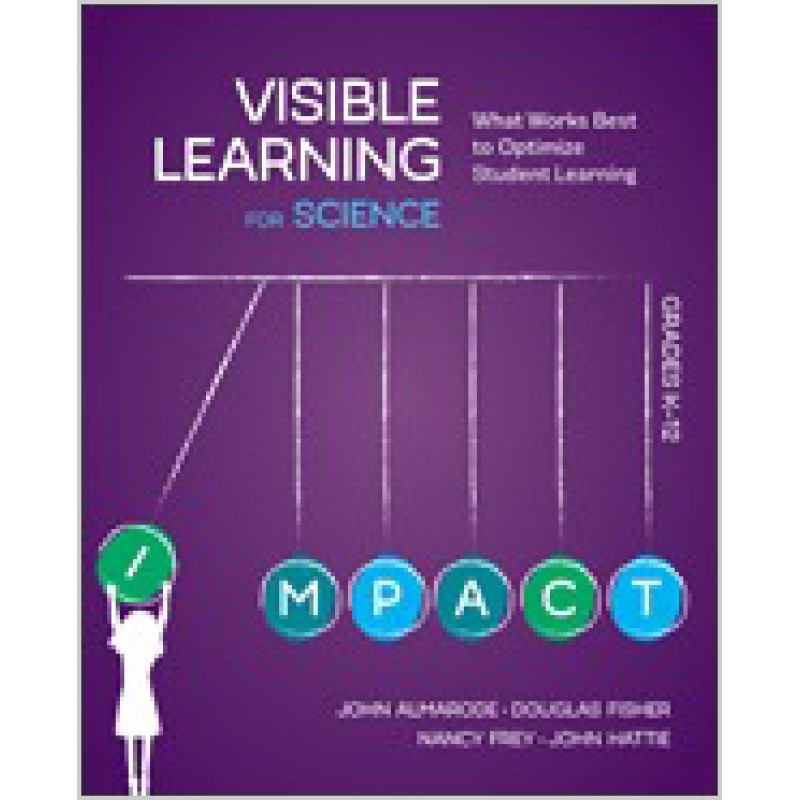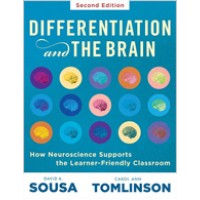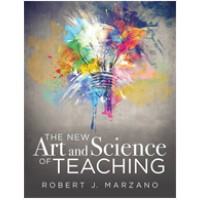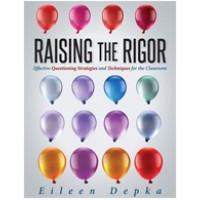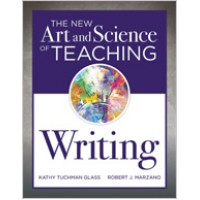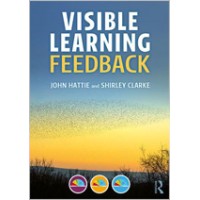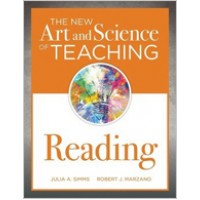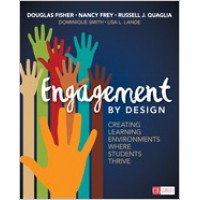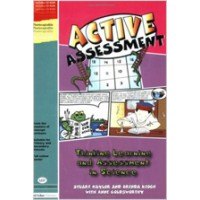Visible Learning for Science, Grades K-12: What Works Best to Optimize Student Learning, Mar/2018
| Author(s) | John T. Almarode, Douglas B. Fisher, Nancy Frey, John Hattie |
| ISBN10 | 1506394183 |
| ISBN13 | 9781506394183 |
| Format | Paperback |
| Pages | 216 |
| Year Publish | 2018 March |
Synopsis
In the best science classrooms, teachers see learning through the eyes of their students, and students view themselves as explorers. But with so many instructional approaches to choose from—inquiry, laboratory, project-based learning, discovery learning—which is most effective for student success?
In Visible Learning for Science, the authors reveal that it’s not which strategy, but when, and plot a vital K-12 framework for choosing the right approach at the right time, depending on where students are within the three phases of learning: surface, deep, and transfer.
Synthesizing state-of-the-art science instruction and assessment with over fifteen years of John Hattie’s cornerstone educational research, this framework for maximum learning spans the range of topics in the life and physical sciences. Employing classroom examples from all grade levels, the authors empower teachers to plan, develop, and implement high-impact instruction for each phase of the learning cycle:
Surface learning: when, through precise approaches, students explore science concepts and skills that give way to a deeper exploration of scientific inquiry.
Deep learning: when students engage with data and evidence to uncover relationships between concepts—students think metacognitively, and use knowledge to plan, investigate, and articulate generalizations about scientific connections.
Transfer learning: when students apply knowledge of scientific principles, processes, and relationships to novel contexts, and are able to discern and innovate to solve complex problems.
Visible Learning for Science opens the door to maximum-impact science teaching, so that students demonstrate more than a year’s worth of learning for a year spent in school.
About The Authors:
Dr. John Almarode has worked with schools, classrooms, and teachers all over the world. John began his career in Augusta County, Virginia, teaching mathematics and science to a wide-range of students. Since then, he has presented locally, nationally, and internationally on the application of the science of learning to the classroom, school, and home environments. He has worked with hundreds of school districts and thousands of teachers across the world. The work of John and his colleagues has been presented to the United States Congress, The United States Department of Education, as well as the Office of Science and Technology Policy at The White House. John has authored multiple articles, reports, book chapters, and books. However, what really sustains John, and his greatest accomplishment is his family. John lives in Waynsboro, Virginia with his wife Danielle, a fellow educator, their two children, Tessa and Jackson, and Labrador retrievers, Angel and Forest.
Douglas Fisher, Ph.D., is Professor of Educational Leadership at San Diego State University and a teacher leader at Health Sciences High & Middle College. He is the recipient of an IRA Celebrate Literacy Award, NCTE’s Farmer Award for Excellence in Writing, as well as a Christa McAuliffe Award for Excellence in Teacher Education.
Professor John Hattie is an award-winning education researcher and best-selling author with nearly 30 years of experience examining what works best in student learning and achievement. His research, better known as Visible Learning, is a culmination of nearly 30 years synthesizing more than 1,500 meta-analyses comprising more than 90,000 studies involving over 300 million students around the world. He has presented and keynoted in over 350 international conferences and has received numerous recognitions for his contributions to education. His notable publications include Visible Learning, Visible Learning for Teachers, Visible Learning and the Science of How We Learn, Visible Learning for Mathematics, Grades K-12, and, most recently, 10 Mindframes for Visible Learning.

